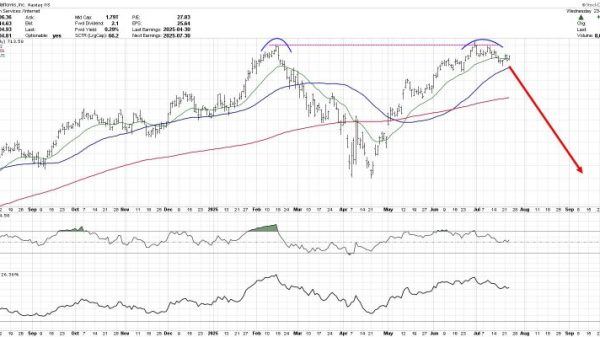Washington Post columnist Shadi Hamid observed something while at home over the Thanksgiving break: Several Arab relatives told him that they would not support President Biden’s reelection next year because of his response to the Gaza war. They wouldn’t vote for Donald Trump, should he be the Republican nominee — they just don’t plan to vote for president at all.
MSNBC’s Mehdi Hasan indicated that he’d heard similar rumblings.
“Dems need to understand that the anger is very real,” he wrote on social media.
The Democrats responsible for Biden’s reelection campaign were probably already aware of the unhappiness. At the end of October, NBC News looked at the frustrations of Muslims and Arab Americans over Biden’s unwavering support for Israel’s response to the Oct. 7 Hamas attack. Even then, the anger was obviously not manifesting simply at the individual level but also at an institutional one, with community leaders indicating they and their organizations would withhold support for the Democratic incumbent.
The obvious question that arises is whether the evaporation of this support could shift the 2024 presidential election results. It’s a question that’s worth trying to answer if only because of how it reflects the Democratic coalition — but it’s also a question that elevates a more important worry for the political left.
The Census Bureau estimates that, as of the 2020 Census, there were about 3.5 million people in the United States of Middle Eastern or North African descent. This category, often referred to with the shorthand “MENA,” is necessarily overly broad for the question at hand, and includes individuals from a sweeping range of cultural and national backgrounds.
It’s also imperfect because the bureau doesn’t track MENA as a separate racial category. It had planned to, introducing the category on the 2020 questionnaire. That change was spiked by the Trump administration.
Using the bureau’s 2020 estimates by county, we see that counties with higher percentages of MENA residents were generally more likely to support Biden in the 2020 election. On average, counties that backed Biden that year had twice the density of MENA residents as those that backed Trump.
That’s only among counties where the number of MENA-descended residents was measurable. Trump won by 40 points in counties where the number of MENA residents was too small for the bureau to break out. The counties with measurable MENA populations but at the lowest density also backed Trump by 27 points. The higher the density of MENA residents, though, the greater the swing to the left. The fifth of counties with the highest percentages of measured MENA residency backed Biden by 26 points.
But this doesn’t mean that those places are more heavily Democratic because of their higher populations of MENA residents. The counties with the highest densities of MENA residents are heavily urban, places that Democrats win in general. More than 101 million people live in urban counties that are in the upper half of measurable MENA population density. It has long been the case that immigrants to the United States move to large cities and/or places where other immigrants from their countries already live, creating more-dense communities sharing a common background. Big cities, though, aren’t Democratic specifically because of MENA residents.
If we look at the question from the standpoint of the 2020 results, we seem to get a bit more clarity. In each of the five states that flipped from Trump in 2016 to Biden in 2020, the number of MENA residents is higher than the vote margin. That includes Michigan, which has one of the nation’s largest MENA populations. (Michigan also wasn’t particularly close, despite the post-2020 rhetoric; 18 states had narrower vote margins in the presidential contest.)
Assuming that the MENA community gave Biden his 2020 win assumes, though, that all of those residents are adult citizens who are registered to vote. That’s not the case. The Census Bureau estimates that about a quarter of MENA residents are under the age of 18. Assume that holds across states and Pennsylvania’s and Wisconsin’s margins exceed the MENA population total. If you further assume that Biden won MENA voters by about 25 points, Michigan drops off the list, too. And this doesn’t account for citizenship.
This looks only at one facet of the question, of course. Anger at Biden’s response to Gaza extends beyond U.S. residents who fall into the MENA category, most obviously to many Muslim Americans. PRRI’s 2022 survey of religious identity estimates that about 0.6 percent of Americans are Muslim, a smaller number than are categorized as MENA by the Census Bureau. Importantly for our consideration here, PRRI also estimates that about 1 percent of Democrats are Muslim. If Biden lost 1 percent of his votes in Arizona or Georgia in 2020, he’d have lost both states.
While it’s useful to recognize intricacies of political coalitions, such as that non-White U.S. residents and particularly immigrants are more likely to live in urban areas, it offers an incomplete picture. The numbers above are misleading in part because they focus on the trees, not the forest.
The real issue is enthusiasm or, if you prefer, apathy. It’s how Biden’s actions as president disincline his 2020 supporters from going to the polls again in 2024. The issue isn’t whether this particular group of U.S. residents will not vote; it’s the extent to which they reflect just one facet of a broader, beyond-MENA community that is similarly disaffected. Young people. Black people. Hispanic people. As we’ve written, 2024 may be decided by a broad pattern of nonvoting, if not a narrow one.
You can’t be president without making some part of your base unhappy. Biden has certainly not avoided this. The question he faces is whether the anger he faces now from elements of his 2020 base will linger for the next 12 months — and how far that anger spreads. The left’s frustration over Biden’s approach to Gaza, for example, extends well beyond Muslim and Arab American voters.
This is where the observations of Hamid and Hasan are particularly informative: It seems quite safe to assume that the anger in that community will indeed linger, as will its halo effect elsewhere on the left.




























